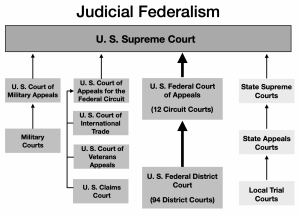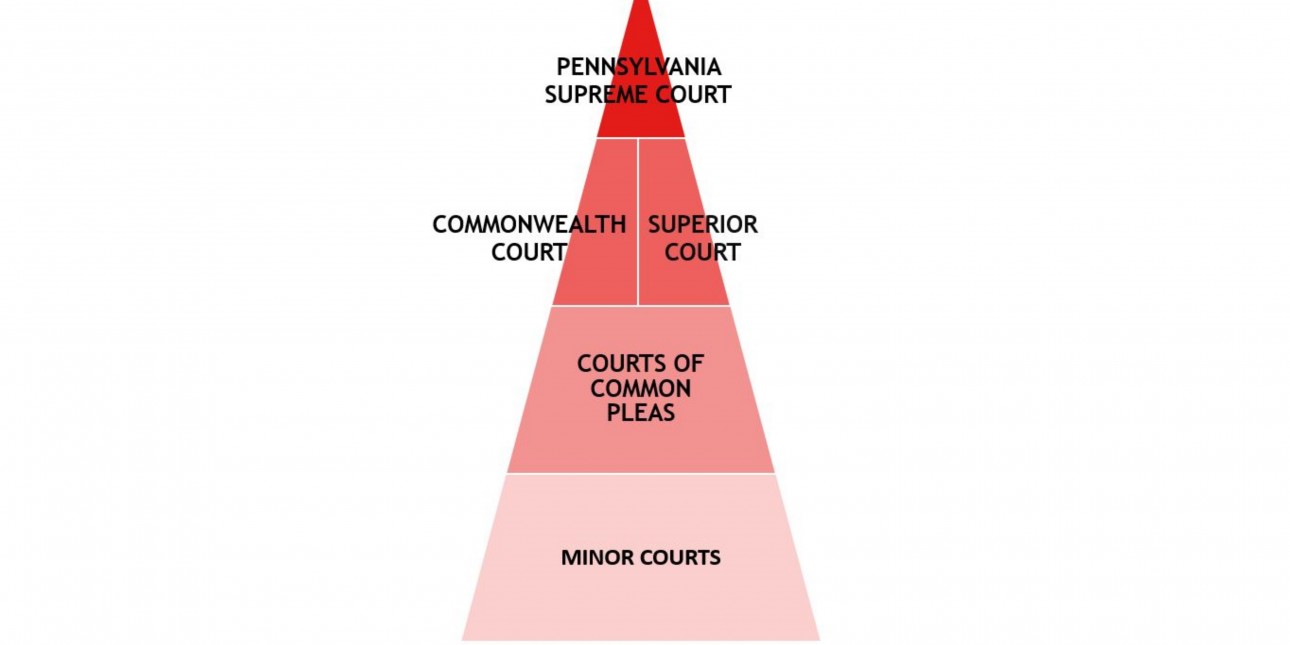Under the Spremacy Clause of the constitution state courts must uphold a federal law that conflicts with state law. Authority for law rests with state courts and public policy authority is reserved to federal courts.

Judicial Selection In Virginia Ballotpedia
Constitution and hears matters of federal law while the state courts interpret their own.

. State courts handle most criminal and civil trials whereas federal courts address constitutional law and appeals from state courts of last resort. State court systems are responsible for trying state and federal cases for the first time. Most state court systems include small claims courts for the resolution of minor disputes in small claims courts.
Most state courts systems include small claims courts for the resolution of minor disputes. They oversee bankruptcy cases. Which of the following statements about limited jurisdiction trial courts is true.
State courts usually conduct all their different types of trials in one court. Each has its own structures and procedures. Federal courts handle most appeals from the state courts of last resort whereas the state courts address most crimes and civil cases.
In small claims court The ordinary rules of. Due to federalism both the federal government and each of the state governments have their own court systems. State and federal courts operate in distinctly separate geographic areas.
Has discretionary jurisdiction over all cases arising in the state system. B In states that do not have an intermediate court of appeal appeals go to the federal court of appeals. A States only have an intermediate court of appeals if there is no state Supreme Court.
State courts handle constitutional law but only the federal courts can make new laws based on their interpretations. Comparing Federal State Courts. The correct answer is letter C.
It creates a federal system of government in which power is shared between the federal government and the state governments. The federal system a. They are courts with original jurisdiction over specialized cases such as juvenile offenses and traffic violations.
It may be a court of general jurisdiction such as a circuit or superior court or it may be a court of special or limited jurisdiction such as a probate juvenile traffic or family court. Each state get to organize its judicial system under their own constitution handling the majority of civil and criminal cases in the US. 50 The Class Action Fairness Act of 2005 ________.
State courts handle civil prosecutions whereas criminal prosecutions are reserved for federal courts. A case begun in a state court cannot be transferred to a federal court. Which of the following is true about responsibility in the u.
The United States has two court systems state and federal. The Constitution outlines a judicial plan that each state must follow. The United States court system is actually many court systems.
Is the only one based on the constitutional doctrine of the separation. Normally there is a state supreme court which oversees the court system in each state and when the cases involve federal law the state supreme court holds the final decision. The federal court system interprets the US.
Each state government organizes its court system under its state constitution. A court of original jurisdiction. Concurrent federal jurisdiction means that both state and federal courts have jurisdiction over a case.
Question 18 Which of the following is true regarding state intermediate courts of appeal in state court systems. They hear personal injury cases C. Subject-matter jurisdiction is a courts power to hear certain kinds of cases.
Federal courts handle constitutional law but only the state courts can make new laws based on their interpretations. Which of the following is true of state courts but not federal courts. Some cases initiated in a state court system ultimately end up in the federal court system.
The two tiers are. Which of the following is true about responsibility in the US. They can elect their judges B.
Most state courts are part of a two tier system. Constitution is the supreme law of the land in the United States. D denies different monetary awards to class members based on their geographical location.
A federal system and 50 state systems. State courts have the power to hear all cases not within the exclusive jurisdiction of the federal court system. This is the lowest level of court and is usually the forum in which a case or lawsuit originates.
The general workhorse of a state court system is the trial court. B The named plaintiffs in a class action have to pay all the court costs. Trial and appellate courts.
They hear constitutional law cases. Under the supremacy clause of the constitution state courts must uphold a federal law that conflicts with states law. Legal cases begin in a lower court and sometimes work their way up to a higher court.

Chapter 32 Paths To The Supreme Court Attenuated Democracy

Pennsylvania Court Structure Pennsylvanians For Modern Courts

0 Comments